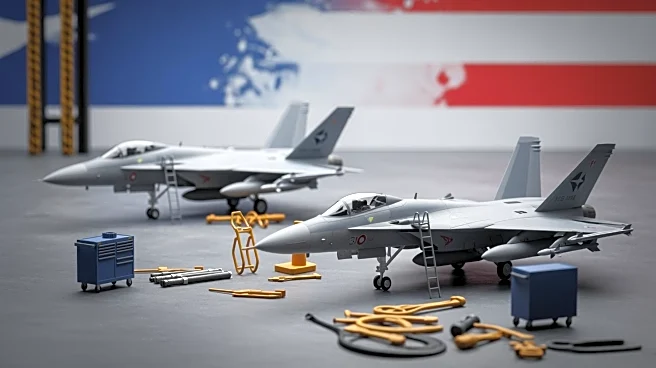What's Happening?
INGENIO Aerospace has introduced AeroPortal, a new system designed to revolutionize technology integration in aircraft. The system includes the AeroPuck, which offers USB PD charging up to 100W, 10 Gb
Ethernet speed, and supports accessories up to 30lb. This innovation aims to provide high-speed, high-power connectivity that is interchangeable, enhancing design freedom in aviation. Aloft AeroArchitects, a Boeing Business Jet service center, will be the first to install the AeroPortal system, highlighting its potential to streamline installation processes and offer customizable in-flight experiences.
Why It's Important?
The introduction of AeroPortal by INGENIO Aerospace represents a significant advancement in the aviation industry, particularly in technology integration. This system promises to enhance efficiency and adaptability in aircraft design, which could lead to cost savings and improved passenger experiences. The ability to quickly adapt to technological changes without major modifications is crucial for maintaining competitiveness in the aviation market. This development could benefit aircraft manufacturers, service providers, and ultimately, passengers who will experience more advanced and customizable in-flight services.
What's Next?
With the initial installation by Aloft AeroArchitects, the AeroPortal system is set to be evaluated for its effectiveness and potential for broader adoption. If successful, it could lead to widespread implementation across various types of aircraft, including commercial and military. The aviation industry may see increased collaboration between technology providers and aircraft manufacturers to further enhance and customize in-flight technology solutions.
Beyond the Headlines
The modular nature of AeroPortal could set a new standard for aircraft technology integration, emphasizing the importance of flexibility and future-proofing in aviation design. This approach aligns with broader industry trends towards modularity and adaptability, potentially influencing future regulatory standards and design practices.












